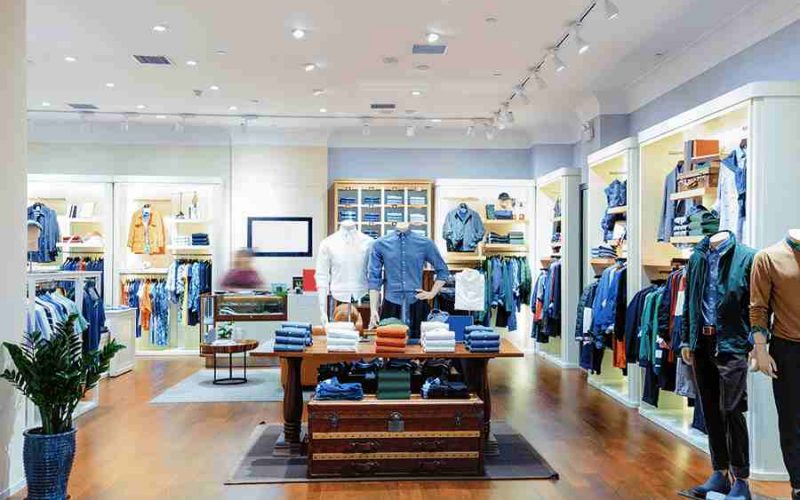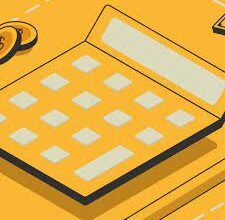Many people currently associate the word “retail” exclusively with an online store. Whilst many small businesses are thriving in the online marketplace, there is still a need for traditional retail outlets. Despite the fact that the majority of these stores now have an online presence, there is still something to be said about the convenience of actually going out and making a purchase in person. As long as they can buy what they need, customers typically don’t care where they shop for consumer goods. It is important for marketers, who are entrusted with generating customer experiences and matching consumer expectations, to pay attention to the various retail store types. To increase sales and repeat customers, it is important to have a firm grasp on the various retail categories and how your store fits into them. How to open and run a retail store will also be discussed in this piece.
What is Retail Store?
By contrast, a retailer or retail store is the location where goods and services are made available and sold to the public.
Furthermore, While trying to figure out what qualifies as a “retail store,” it’s important to first establish what “retail” means. Selling a product or service directly to end users for the purpose of making a profit is simply referred to as “retail.” A retail store’s layout and fixtures are tailored to facilitate the direct interaction of customers with the products for sale.
There are many different kinds of establishments in the retail industry nowadays since goods can be distributed through a variety of methods. Retailers have a wide range of organizational models, depending on whether they are virtual or physical. Yet, once again, the buyer must be the end-user or customer for the store or sale to be considered retail.
There are around 4 million businesses open for business in the United States alone. These stores are the largest private employer in the country, with approximately 40 million employees.
What are Retail Store Components and characteristics?
Stores in the retail industry come in a wide variety of shapes and sizes, each optimal for selling a particular set of products to a specific customer demographic. Nonetheless, there are fundamental elements shared by all of them.
#1. Shop Floor
The shop floor is the primary space dedicated to making sales in a retail store. This is where the wares are placed for the consumers to view and make their selections.
However, this location houses the many display-related fixtures, walls, and props that are used throughout the store. This section of a clothing store typically houses fitting rooms as well.
Depending on the kind of store, there are a variety of various layouts and recommendations for how the sales floor should be laid out. For instance, some retail stores make use of a free-flow plan, while others rely on forced-path or grid layouts instead. The selection of the optimal style of store layout can be facilitated by taking into account both the types of products sold and the shopping behaviors of customers.
#2. Cash Area
After they have finished shopping, customers proceed to the cash area in order to check out and make their payment. This section is typically located near the front of the store, close to the entrance. This is the case with convenience stores and supermarkets, among other types of retail stores. The cash register section is typically located in the back of the store in other types of merchants, such as clothing boutiques.
There may be one, two, three, or more cash registers located in the cash area of the business. This number is determined by the dimensions of the retail space as well as the traffic patterns. In addition to the cash registers, there is a location, either behind the pay area or underneath one of the registers, where customers can put their shopping bags while they are inside the store.
#3. Store Front
The front of the store serves as the establishment’s primary point of access. This section is often left clear in order to make it easier for a large number of customers to move through the establishment; for instance, at supermarkets. In some establishments, such as those dealing in fashion, a portion of the storefront is partitioned off to serve as windows, which are utilized to showcase the most recent products available as well as promotional materials.
#4. Back of House
The back-of-house area at the retail store serves many different purposes:
- Inventory Control
- General Office Duties
- Facilities for Employee Use: Change Rooms and Rest Room
- Delivery Access from the Rear
What Type of Business Is a Retail Store?
Consumer products and services are the main focus of a retail store. Several of their products and services may also be purchased online or over the phone and then shipped to the buyer. Businesses in the retail store include the likes of apparel boutiques, pharmacies, supermarkets, and corner shops.
Types of Retail Store
Everything about a retail store, from the layout to the customers they attract, is defined by the store’s retail genre. Let’s take a closer look at the many types of a retail store.
#1. Department Stores
Department stores are huge retail establishments that consist of numerous departments, each having its own distinct selection of products, floor area, management team, and employees. Kitchenware, car supplies, electronics, apparel, and footwear are just a few of the many categories covered by the various departments. Many shoppers have different needs, thus department shops stock a huge variety of goods. Many people go there because of the numerous departments available, the high quality of their products, and the fair prices. In addition, department shops have established themselves as trustworthy sources due to the quality and variety of the goods and services they offer.
There has been a recent shift in focus at department stores in fostering brand loyalty. With the rise of e-commerce, fewer people are going out to shops in person, which has had a particularly severe effect on department stores. This is due to the fact that they have a large variety of items that can be purchased quickly and conveniently via the internet. Department stores are often enormous, multi-story structures that stand on their own or take up a significant portion of a retail mall’s floor space.
#2. Specialty Stores
A specialty retail store is a sort of store that sells only one specific type of product. A specialty shop’s primary goal is to promote and sell a single product line or category. Furthermore, a specialty shop may sell only hardware, electronics, cosmetics, gourmet foods, or even prescription drugs. Unlike department stores, which provide a wide variety of products, specialty shops tend to focus on just a few categories, allowing their employees to become experts in those areas. Often, you’ll find these stores in a crowded shopping center or plaza. They need a lot of room to function, and the passage of time affects them significantly.
RadioShack used to be on the cutting edge of retail technology, but it has since closed because of competition from online shopping communities. Best Buy (technology), Lowes (home and hardware), Staples (office supplies), Toys R Us (toys), and Bath & Body Works (cosmetics/self-care) are all examples of specialty retail stores.
#3. Grocery/Supermarket
Supermarkets and grocery stores stock a wide variety of consumable goods. You can find things like groceries (both fresh and packaged), alcohol (beer and wine), food (for your pets), and cleaning supplies (paper products, detergent, etc.). Grocery or supermarket stores include well-known names like Safeway, Kroger, and Whole Foods.
Small sizes range from 12,000 square feet to 25,000 square feet, while micro-stores in urban markets are considerably smaller. The average size of a grocery store today is 38,000 square feet. Many discount supermarkets with limited selections and smaller footprints, such as Aldi and DG Market, have entered the market in recent years.
Grocery stores are usually arranged in a loop layout, with a main aisle going all the way around and secondary aisles branching out from it.
#4. Full-Line Discount Stores
Like a department store, a full-line discount store offers a wide selection of goods in a number of categories. On the other hand, full-line discount retailers are able to provide much lower pricing on their wares because they stock up on the product in bulk for later sales. A full-line discount retailer’s bottom line depends on moving plenty of products rapidly so that more cash can be managed and turned into profit. Although full-line discount retailers may not provide the finest customer service, they present a formidable challenge to the growth of the e-commerce industry since they serve as a “supercenter” for which customers can find everything they need. Walmart, Target, and K-Mart are just a few instances of full-line discount stores.
#5. Drug Stores
You can find a wide variety of generic and brand-name drugs, as well as over-the-counter remedies, at a drug retail store. Cosmetics, toiletries, and even furniture and novelty items can be found in the same sections as pharmaceuticals at most drug stores. Because of the specialist nature of this kind of store, the quality of service and expertise about the products sold is usually high. In the United States, you can purchase pharmaceuticals from retailers including Walgreens, CVS Caremark, and Rite Aid.
#6. Off-Price Retail Store
The off-price retail strategy developed from the original discount strategy. To help customers better understand the value of a reduced price, many stores often prominently display the “regular” selling price. Off-price stores are not directly affiliated with producers, although they do purchase massive quantities of name-brand products at deep discounts. Brands like T.J. Maxx, Burlington Coat Factory, and Nordstrom Rack are good examples.
Discount department shops like TJ Maxx typically range from 30,000 to 120,000 square feet in size, with Nordstrom Rack stores falling somewhere in the middle. The average size of a store in this subsector is 2,000 square feet, but smaller formats are rising in popularity as well. Most are laid out in some variation on a grid or a loop, or sometimes both. Also, read Retail Customer Experience: Definition & All You Need To Know.
#7. Warehouse
Clubs, such as Sam’s Club and Costco, sell food and other products in bulk at low prices. In order to maximize profits, these establishments provide a bare-bones shopping experience.
The standard layout for a warehouse is a continuous loop, and the usual size is between 84,000 and 146,000 square feet.
How to Open or Run a Retail Store
To reach its customers, a retail store acquires goods and services from producers and distributors and then sells them directly to the general public. Everything from food to clothing to home furnishings to automobiles falls within this industry’s broad umbrella.
Retail is a huge market with a wide variety of subsectors, providing numerous opportunities for entrepreneurs but also making it a highly competitive and dangerous business venture. However, it is possible to launch a retail store that stands out from the crowd with careful preparation. Here are tips on how to open or run a retail store.
#1. Develop an Idea and a Business Strategy
Establishing a business plan and a store concept comes first when you want to open or run a retail industry. Choose what kind of store you wish to open as a first step. Please respond to each of the following inquiries.
- What will it be that your company sells?
- When advertising, who do you envision as your typical buyer?
- How would you describe your company’s pricing structure?
While there are undoubtedly many more considerations to be made, a retail store’s launch is not much different from the opening of any other firm. First, you need to settle on a product or service to market and identify your ideal customer. In addition, a successful retail store is one that caters to a certain consumer desire.
When it comes to running a successful retail store, “know your competition. There are no longer any truly novel concepts. Know the alternatives your clients have to you and what you’re selling. Not taking any action at all is always an option.
After you have a firm grasp on who you’ll be going up against, you can formulate an effective approach. Your opinion, how reasonable is the price? In terms of quality? In the field? Concerning the issue of variety? Don’t be vague about your competitive edge. Learn how to convey that to potential buyers through your presentation and advertising.
#2. Establish a Retail Store Legally
Now that you know how to establish a retail store and have a plan and a budget in place, you may officially open for business.
You should start by thinking of a company name if you haven’t already. Choose a name that conveys your company’s values and identity, leaves room for expansion, and isn’t already used.
Search Google for your potential company name to see if it’s in use by another business. The next step is to scan the Secretary of State’s database for businesses using the possible name, as well as the U.S. Patent and Trademark Office’s database for trademark filings, to make sure the name isn’t already in use.
It’s prudent to obtain a domain name and launch social media profiles in your name after verifying their availability. So, you can have your business online and your marketing campaign up and running quickly.
Before registering your business, you must choose its legal structure. Business structure affects taxation, legal protection, ownership, and funding (in addition to allowing you to register your business in the first place). Consult a business attorney or accountant for this critical stage.
After choosing a business entity type, register your business on your state’s Secretary of State website. Next, apply for an EIN online at the IRS. The government uses your EIN to identify you for tax purposes. You may need an EIN to get a company loan later.
#3. Identify an Appropriate Location
Finding a suitable location is of paramount importance when you want to open or run a traditional retail store.
Choosing a prominent location to set up shop in should be a top priority. Some businesses make the mistake of thinking they can get by on a low-cost site and relying on word-of-mouth to bring in clients, but in reality, there’s often no alternative to being in a highly-trafficked area of town. Choosing a downtown location could be more expensive than one a few miles outside of town, but it could also bring in thousands more customers annually.
First-time merchants should be cautious about trying to save money on rent if they are not a true “destination retailer,”. Clients may be discouraged if the facility is difficult to reach or is located in an inconvenient part of town. The retail real estate industry is very emotional, with retailers placing little weight on real estate costs.
Furthermore, when deciding where to put your business, look to where your target demographic already spends time. You may find that opening a retail store in the heart of town is too expensive, with little return on investment in terms of new clients, if most of your current clientele lives on the outskirts. Locate your store close to where your ideal customers hang out. This advice may sound obvious, but many businesses make the mistake of looking for a site because they think it would be great rather than because it is where their target market lives.
#4. Develop Partnerships with Suppliers
While launching a retail store, it is essential to establish positive working ties with local suppliers. Consistently satisfying consumers is essential for small business owners because of the difficulties they confront. It is important for business owners, especially those in the retail industry, to have a solid rapport with their suppliers.
Establishing positive working ties with suppliers early on is crucial to any company’s long-term success. Using foreign suppliers can make this more challenging.
However, “the global supply chain is evolving at a dizzying pace,” “It is challenging to establish worldwide relationships that will offer you the goods and services you need in light of the current trade uncertainty. You should seek backing if you want to buy all or some of your items from suppliers outside the United States. As part of your business strategy, you should seek out partners who are knowledgeable in sourcing, logistics, customs, and tax.
#5. Discover New Avenues for Advertising
The success of any retail store depends in large measure on its marketing efforts. Pop-up stores are a viable option to try out if you run an online company and are considering branching out into a brick-and-mortar location. For a limited time, several stores set up shops in various transit hubs. Perhaps your clothes store is interested in setting up a temporary location at a downtown event.
With a pop-up shop, you can offer a temporary retail space or take your business on the road. Pop-up stores are a great way to gauge the viability of your online retail business in the real world.
Also, Pop-up shops are useful even if you don’t have an established web store. After establishing a permanent storefront, you can try holding temporary pop-up shops in other areas once every few months.
You can attract new clients in a new area by opening a retail store every few months in a town that is only 20 to 30 minutes away from your current location. Those who are enthusiastic about your wares may travel up to 30 minutes to visit your store, or they may opt to make their purchases online. For a limited time, say a few days or weeks, opening a pop-up shop is a great way to get people talking about your brand.
Social media and in-store sales are two other potential channels for advertising. Offering discounts can be an effective strategy for attracting new clients. Offering discounts of up to 30% on select items over a holiday weekend, for instance, may encourage more customers to visit your store. There are a variety of advertising venues available, so feel free to get imaginative. In addition, to attract more clients, provide a 10% price discount from December 20th to 24th.
Conclusion
Be sure that as you move through the many stages of business formation, you do not lose sight of the reason(s) behind why you decided to create a retail store in the first place. If you can recall the driving force behind the birth of your business, you may find that you even like the process’s more minute details; for example, who knew that researching point-of-sale (POS) systems could be so exciting?
Furthermore, before opening a retail store, it’s important to determine who you’ll be selling to. Finding a venue and making sure you’re in compliance with the law might wait until you know who you’re selling to and what you’re selling to them.
Retail Store FAQs
Is a retail business profitable?
Yes, it is. The potential for financial success grows alongside the ever-changing retailing industry.
How do you source products for your retail store?
- Share your requirements for stock with others.
- Get specific with your key performance indicators.
- Don’t wait to contact your vendor about a problem.
- Build a budget for your vendors.
- Solicit samples from all of the vendors you’re considering.
- Find out how reputable your suppliers are.
- Communicate your requirements to your vendors right away.
Similar Posts
- The 19+ Best POINT OF SALE SYSTEMS FOR SMALL BUSINESS in 2022 (Updated)
- Retail Investors: How To Become One
- HOW TO OPEN A CLOTHING STORE 2023: Best Clothing Store Ideas in 2023






